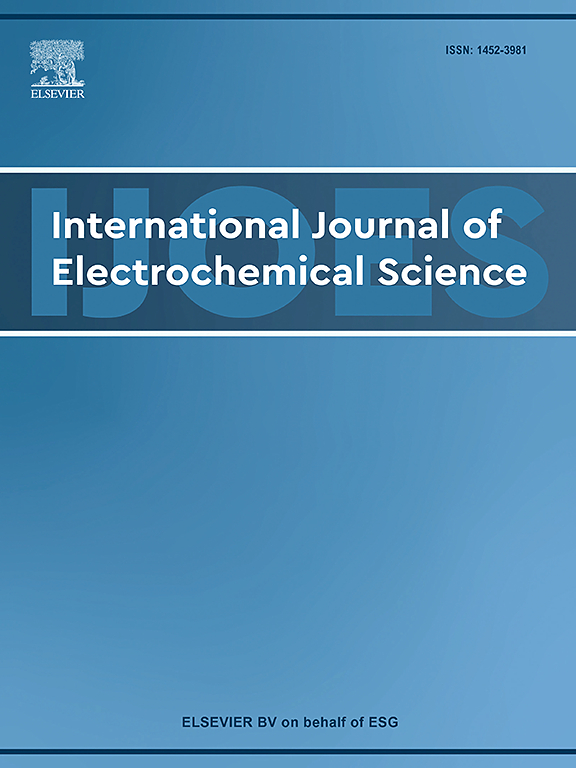Two-dimensional electrode material for (photo)electrochemical reduction of CO2: An overview
IF 1.3
4区 化学
Q4 ELECTROCHEMISTRY
International Journal of Electrochemical Science
Pub Date : 2025-01-01
DOI:10.1016/j.ijoes.2024.100874
引用次数: 0
Abstract
Human-induced global warming poses one of the most urgent and critical challenges to our planet's atmosphere, ecosystems, and overall well-being. To combat this, we must focus on reducing our reliance on fossil fuels, thereby leading to a consequent decrease in atmospheric CO2 levels. However, the endeavour to curb CO2 emissions is riddled with obstacles, including sluggish kinetic reactions of the CO2 conversion process and poor selectivity of the conventional methods. In addition, detecting CO2 products and intermediates on a small scale presents a notable challenge within this field. The minute quantity of the CO2 product has the potential to undergo further oxidation or evaporation, thereby complicating the detection process. Within the realm of CO2 reduction methods, the photoelectrochemical (PEC) CO2 conversion technique emerges as highly promising and feasible. This method facilitates precise control over the thermodynamics and kinetics of the CO2 reduction process, thereby enabling improved product selectivity and accelerated reaction kinetics. Its emulation of natural photosynthesis with minimal energy input elevates its potential for widespread adoption. Nevertheless, there are certain limitations currently hindering its widespread application. In contrast, in recent years, 2D electrode materials have demonstrated promising results for PEC CO2 conversion. The distinct mechanical, physical, and electrochemical properties of 2D materials hold significant promise as novel catalysts for CO2 reduction. Furthermore, modifying the 2D electrode surface through techniques such as spin-coating, sputter coating, electrophoretic deposition, and electrochemical means can substantially enhance CO2 reduction and facilitate the production of valuable by-products. These 2D-based composite materials present an innovative perspective, encapsulating their performance and the inherent challenges of this pioneering field.
求助全文
约1分钟内获得全文
求助全文
来源期刊
CiteScore
3.00
自引率
20.00%
发文量
714
审稿时长
2.6 months
期刊介绍:
International Journal of Electrochemical Science is a peer-reviewed, open access journal that publishes original research articles, short communications as well as review articles in all areas of electrochemistry: Scope - Theoretical and Computational Electrochemistry - Processes on Electrodes - Electroanalytical Chemistry and Sensor Science - Corrosion - Electrochemical Energy Conversion and Storage - Electrochemical Engineering - Coatings - Electrochemical Synthesis - Bioelectrochemistry - Molecular Electrochemistry

 求助内容:
求助内容: 应助结果提醒方式:
应助结果提醒方式:


